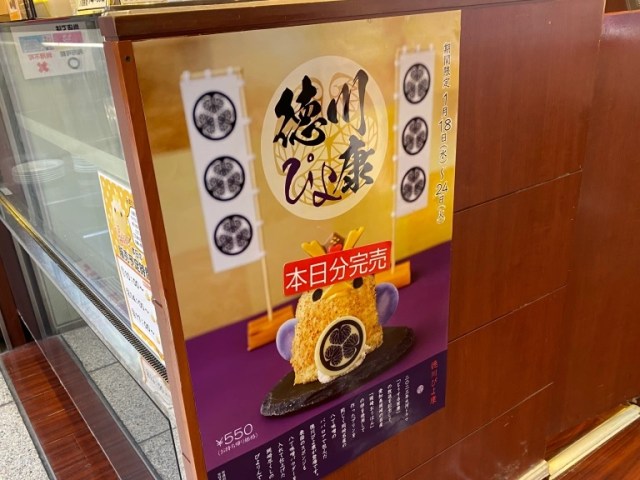
Yeah, Tokugawa Ieyasu was a great shogun and all, but we’re here to see (and eat) Tokugawa Piyoyasu.
At approximately 11 a.m. on a Thursday morning, our Japanese-language reporter Ikuna Kamzezawa got off the Shinkansen at Nagoya Station. Why Nagoya? Because she was on her way to meet a samurai who’s captivated the imagination of Japan: Tokugawa Piyoyasu.
Right now, those of you who are Japanese history buffs are probably scratching your heads. Yes, modern-day Nagoya does more or less correspond to the seat of power held by the most famous lord of the Tokugawa clan. However, his name was Tokugawa Ieyasu, and he’s been dead for over 400 years. So who’s this Piyoyasu? He’s s chick…and also a dessert.
OK, maybe we should back up a bit. Right now, Japanese public broadcaster NHK is airing a historical TV drama about Tokugawa Ieyasu titled Dou Suru Ieyasu?, starring former idol singer and member of Arashi Jun Matsumoto as a young Ieyasu. So these days Nagoya’s pride in their home town hero is especially high.
▼ Promotional displays for Dou Suru Ieyasu? at Nagoya Station
Aichi is famous for a locally raised breed of chicken called kochin. Kochin are prized for the flavor of not just their meat, but their eggs too, which led to the creation of Piyorin, one of the most popular desserts in Nagoya.
Piyorin’s name is a combination of piyo piyo (the sound of chicks chirping in Japanese) and purin, Japan’s delicious custard pudding. Piyorin starts with purin made with kochin eggs, which is then wrapped in vanilla-flavored Bavarian cream and coated with powdery sponge cake. Adorable to look at, sweet on the palate, and with a punny name, it covers three things Japanese sweets fans love. It’s become one of Nagoya’s representative desserts, and with Dou Suru Ieyasu? causing a spike in Ieyasu interest, Piyorin’s makers have created a special samurai-themed version, Tokugawa Piyoyasu, which in addition to kochin eggs makes use of another special ingredient Nagoya is especially fond of.
Because of its soft, jiggly consistency, Piyorin are especially hard to transport, so aside from the rare pop-up shop elsewhere, you have to go to Nagoya to get them. The Piyorin shop in Nagoya Station opens at 10, and by rolling up at 11 Ikuna figured she’d beat the crowds of lunchtime shoppers, pick up some Tokugawa Piyoyasu, and be enjoying them before sundown.
But instead…
…every single Tokugawa Piyoyasu was already sold by noon, and even the supply of regular Piyorin was looking pretty low. While the shop replenishes its stock of Piyorin throughout the day, there’s only one batch of Tokugawa Piyoyasu made daily, so Ikuna had missed her chance.
Unless, of course, she stayed the night in Nagoya and got to the store extra early the next morning, which is what she did.
Even getting to the Piyorin shop at 9:15, 45 minutes before it opened, didn’t make Ikuna first in line, though. In fact, about 20 people were already waiting when she arrived.
Luckily, though, being 21st-ish in line was still good enough. Because of their popularity, sales of Tokugawa Piyoyasu are limited to two per customer, and there were still some left when Ikuna got up to the register. Not a lot, though – Ikuna estimates they were all gone by about the 30th customer, who’d arrived about 30 minutes before the store opened.
As with most specialty sweets in Japan, your Piyorin is placed in a cute and stylish bag, but in this case the benefits go beyond aesthetic. Like we mentioned above, Piyorin is really jiggly, and too much jostling during transportation can cause the poor little chick to collapse on itself. Fans refer to getting your Piyorin home while maintaining its original shape as the “Piyorin Challenge,” and so Ikuna was happy to have a bag that visually announced to people around her “Caution! Piyorin transport in progress here!”
Once back at the SoraNews24 taste-testing facilities, Ikuna opened up her box, and was relieved to see that she’d completed the challenge successfully!
Looking up happily at her were two Tokugawa Piyoyasu, backed by a trio of non-samurai Piyorin. The Tokugawa Piyoyasu sported chocolate samurai helmets and the crest of the Tokugawa clan on their bellies, and Ikuna couldn’t resist giving the dish they sat in a little gentle tap to watch them quiver.
Then it was time to dig in, and Ikuna found out why the Tokugawa Piyoyasu has sort of a sandy, speckled look to it: the sponge cake is lightly dusted with miso powder! Specifically, it’s hatcho miso, a dark-colored premium miso made in Aichi that’s also showing up in McDonald’s hamburgers in Japan right now.
Compared to the straightforwardly sweet and creamy Piyorin, the miso gives Tokugawa Piyoyasu a bit of mature bitterness and sophisticated complexity. Miso might seem like a bold choice for a dessert flavoring, but between this and the miso ice cream we tried, hatcho miso is now two-for-two in our taste tests, and at 550 yen (US$4.25) the Tokugawa Piyoyasu gets full marks in flavor, uniqueness, and cuteness.
▼ And the standard Piyorin is also delicious.
Tokugawa Piyoyasu is currently scheduled to be on sale only through January 24. With Dou Suru Ieyasu? running until December, though, we’re keeping our fingers crossed that this isn’t the last we’ll see of the samurai chick pudding cake. After all, if Ieyasu could found a shogunate that lasted for 300 years, surely Tokugawa Piyoyasu won’t fade away forever after just a few weeks, right?
Related: Piyorin official website
Photos ©SoraNews24
● Want to hear about SoraNews24’s latest articles as soon as they’re published? Follow us on Facebook and Twitter!
[ Read in Japanese ]

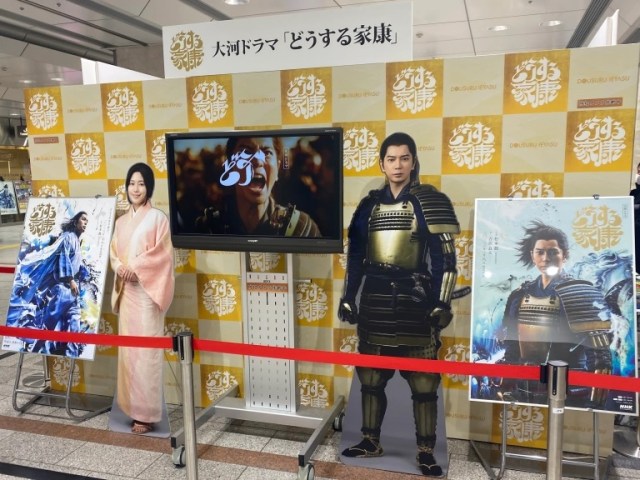
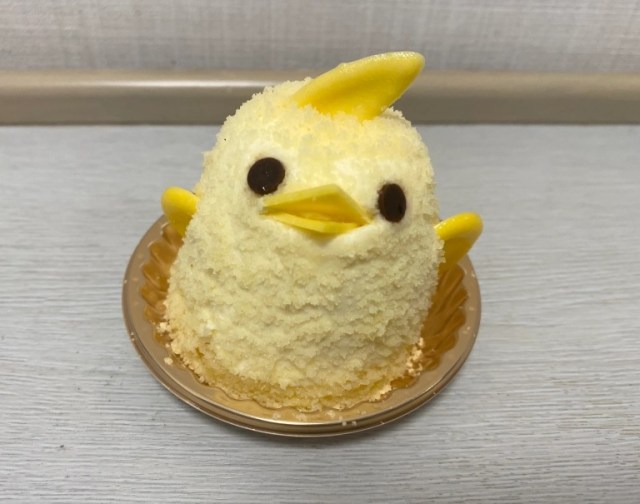
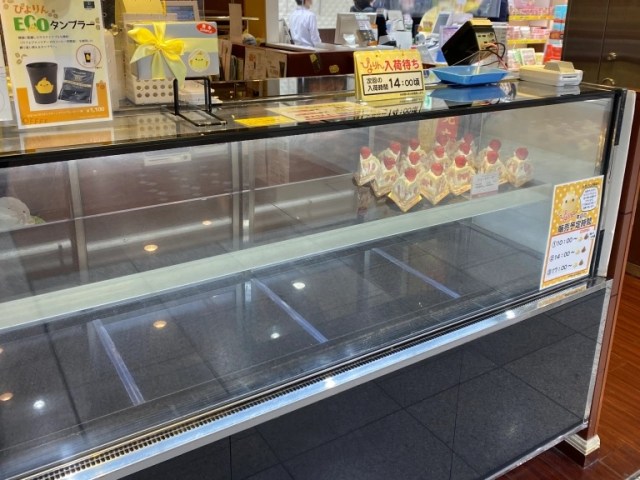

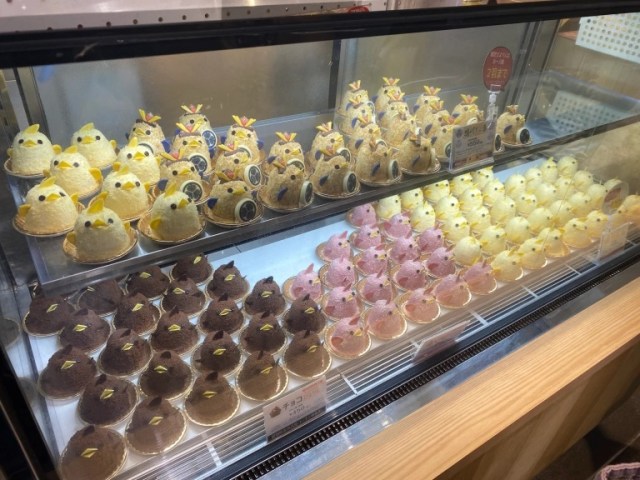
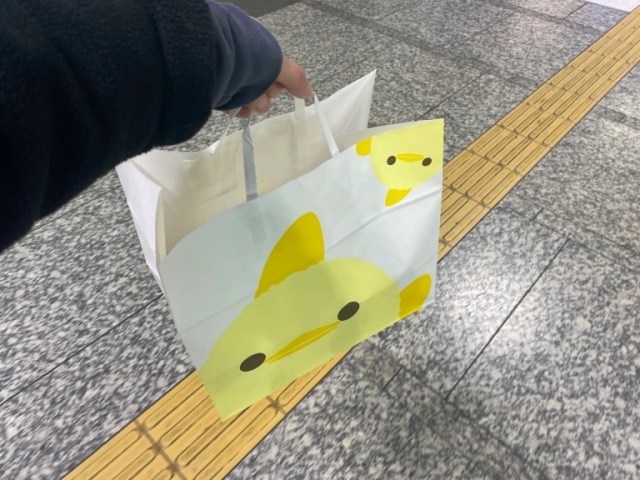
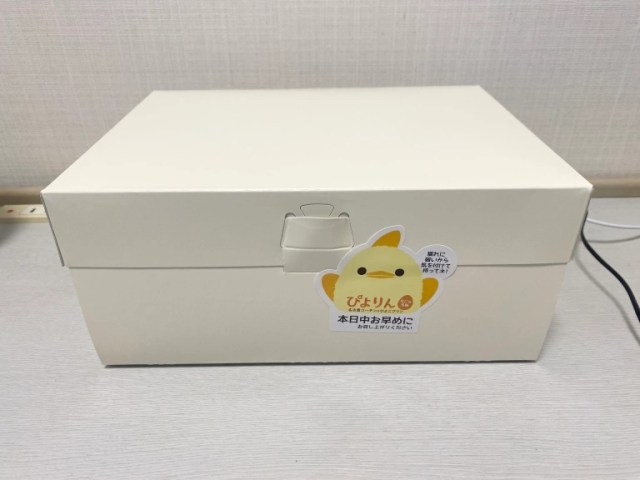
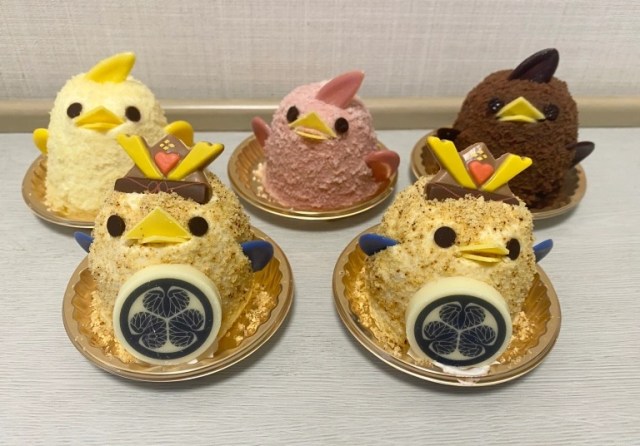
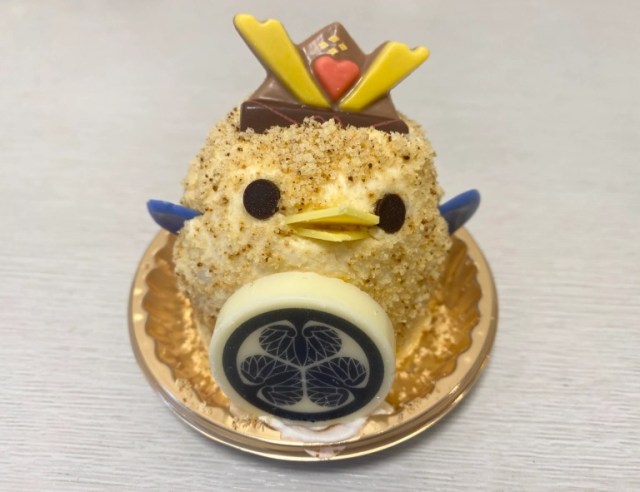
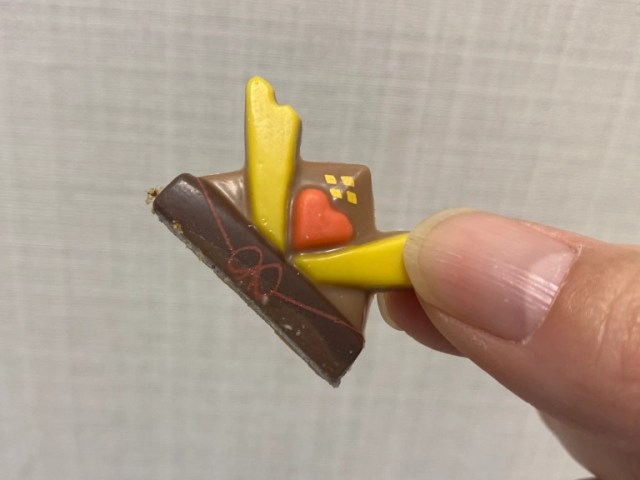
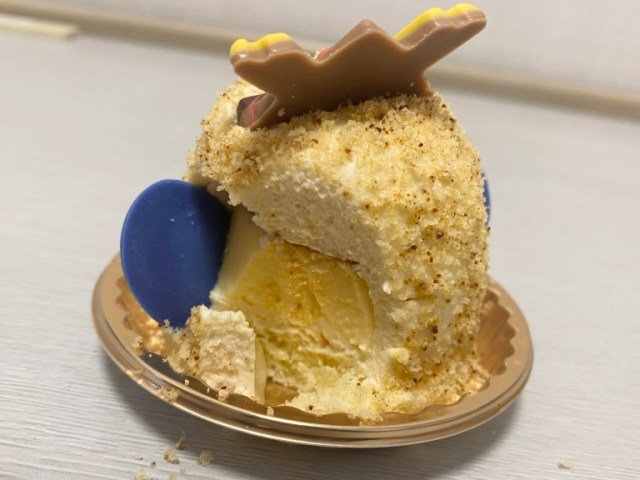
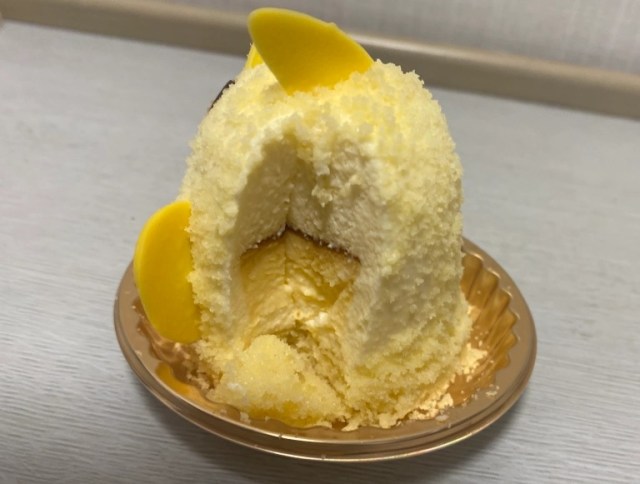
 We buy adorable chick-shaped sugar cubes in Nagoya, realize the horror of using them
We buy adorable chick-shaped sugar cubes in Nagoya, realize the horror of using them Impress your Japanese history professor with this T-shirt
Impress your Japanese history professor with this T-shirt Shogun sweets? Trees said to be planted by first Tokugawa shogun still bear fruit used for sweets
Shogun sweets? Trees said to be planted by first Tokugawa shogun still bear fruit used for sweets A visit to the real-life Naruto Ramen Ichiraku anime restaurant that’s not in Japan【Photos】
A visit to the real-life Naruto Ramen Ichiraku anime restaurant that’s not in Japan【Photos】 McDonald’s breakfast menu in Hong Kong is like nothing we’ve ever seen in Japan
McDonald’s breakfast menu in Hong Kong is like nothing we’ve ever seen in Japan Japan’s new difficult-to-drink-from beer glass protects your liver, but it’s a brutal experience
Japan’s new difficult-to-drink-from beer glass protects your liver, but it’s a brutal experience How to order snacks on a Shinkansen bullet train in Japan
How to order snacks on a Shinkansen bullet train in Japan New samurai glasses are Japan’s latest weird must-have souvenir
New samurai glasses are Japan’s latest weird must-have souvenir “Deflowering” services for virgin women are now a thing in Japan, apparently
“Deflowering” services for virgin women are now a thing in Japan, apparently Doraemon found buried at sea as scene from 1993 anime becomes real life【Photos】
Doraemon found buried at sea as scene from 1993 anime becomes real life【Photos】 Burger King Japan suddenly adds Dr. Pepper and Dr. Pepper floats to its menu nationwide
Burger King Japan suddenly adds Dr. Pepper and Dr. Pepper floats to its menu nationwide Hello, cosmetics! Clinique teams up with Hello Kitty this summer for first-time collaboration
Hello, cosmetics! Clinique teams up with Hello Kitty this summer for first-time collaboration Princesses, fruits, and blacksmiths: Study reveals the 30 most unusual family names in Japan
Princesses, fruits, and blacksmiths: Study reveals the 30 most unusual family names in Japan High-fashion Totoro cuddle purse is like an elegant stroll in the forest【Photos】
High-fashion Totoro cuddle purse is like an elegant stroll in the forest【Photos】 Demon Slayer: Kimetsu no Yaiba gets new roller coaster attractions and food at Universal Studios Japan
Demon Slayer: Kimetsu no Yaiba gets new roller coaster attractions and food at Universal Studios Japan Nintendo history you can feel – Super NES, N64, and GameCube controllers become capsule toys
Nintendo history you can feel – Super NES, N64, and GameCube controllers become capsule toys “The most Delicious Cup Noodle in history” – Japan’s French Cup Noodle wins our heart【Taste test】
“The most Delicious Cup Noodle in history” – Japan’s French Cup Noodle wins our heart【Taste test】 Starbucks releases a cute Frappuccino and Unicorn Cake…but not in Japan
Starbucks releases a cute Frappuccino and Unicorn Cake…but not in Japan Kyoto Tower mascot termination reveals dark side behind cute Japanese characters
Kyoto Tower mascot termination reveals dark side behind cute Japanese characters McDonald’s Japan’s Soft Twist Tower: A phantom ice cream only sold at select branches
McDonald’s Japan’s Soft Twist Tower: A phantom ice cream only sold at select branches Yabai Ramen: What makes this Japanese ramen so dangerous?
Yabai Ramen: What makes this Japanese ramen so dangerous? Finally! Nintendo Japan expands Switch 8-bit controller sales to everybody, Online member or not
Finally! Nintendo Japan expands Switch 8-bit controller sales to everybody, Online member or not Japanese government wants to build luxury resorts in all national parks for foreign tourists
Japanese government wants to build luxury resorts in all national parks for foreign tourists To combat declining birth rate, Japan to begin offering “Breeding Visas” to foreigners
To combat declining birth rate, Japan to begin offering “Breeding Visas” to foreigners 10 things you should buy at 7-Eleven in Japan
10 things you should buy at 7-Eleven in Japan Studio Ghibli releases anime heroine cosplay dresses that are super comfy to wear
Studio Ghibli releases anime heroine cosplay dresses that are super comfy to wear Woman charged for driving suitcase without a license in Osaka
Woman charged for driving suitcase without a license in Osaka Studio Ghibli unveils My Neighbour Totoro miniature house model
Studio Ghibli unveils My Neighbour Totoro miniature house model Kyoto experiencing problems with foreign tourists not paying for bus fares, but not on purpose
Kyoto experiencing problems with foreign tourists not paying for bus fares, but not on purpose Fighting mild hunger with a Japanese soda that turns into jelly in the stomach【Taste test】
Fighting mild hunger with a Japanese soda that turns into jelly in the stomach【Taste test】 Studio Ghibli’s Howl’s Moving Castle tapestry unveiled in Japan for first time
Studio Ghibli’s Howl’s Moving Castle tapestry unveiled in Japan for first time McDonald’s new Happy Meals offer up cute and practical Sanrio lifestyle goods
McDonald’s new Happy Meals offer up cute and practical Sanrio lifestyle goods Sales of Japan’s most convenient train ticket/shopping payment cards suspended indefinitely
Sales of Japan’s most convenient train ticket/shopping payment cards suspended indefinitely Sold-out Studio Ghibli desktop humidifiers are back so Totoro can help you through the dry season
Sold-out Studio Ghibli desktop humidifiers are back so Totoro can help you through the dry season Japanese government to make first change to romanization spelling rules since the 1950s
Japanese government to make first change to romanization spelling rules since the 1950s Foreigner’s request for help in Tokyo makes us sad for the state of society
Foreigner’s request for help in Tokyo makes us sad for the state of society Ghibli founders Toshio Suzuki and Hayao Miyazaki contribute to Japanese whisky Totoro label design
Ghibli founders Toshio Suzuki and Hayao Miyazaki contribute to Japanese whisky Totoro label design Tokyo’s most famous Starbucks is closed
Tokyo’s most famous Starbucks is closed We stumbled upon “Pudding Street” in Hanoi, so of course we had to investigate
We stumbled upon “Pudding Street” in Hanoi, so of course we had to investigate Need a new job? Japanese tourism organization is looking to hire two samurai
Need a new job? Japanese tourism organization is looking to hire two samurai Through the eyes of a ninja – Thrilling drone video recreates shinobi raid at historical temple
Through the eyes of a ninja – Thrilling drone video recreates shinobi raid at historical temple Starbucks releases a cute Frappuccino and Unicorn Cake…but not in Japan
Starbucks releases a cute Frappuccino and Unicorn Cake…but not in Japan “Hey Singaporean taxi driver! Take us to the best restaurant in Singapore!”
“Hey Singaporean taxi driver! Take us to the best restaurant in Singapore!” We get our hands on a coveted Yodobashi lucky bag, this time the beauty and health gadget box
We get our hands on a coveted Yodobashi lucky bag, this time the beauty and health gadget box Have you tried Tokushima ramen? No? You should (says our obsessed Japanese-language reporter)
Have you tried Tokushima ramen? No? You should (says our obsessed Japanese-language reporter) Ramen and girls bar: Where you can talk to women who aren’t dressed like hosts or maids
Ramen and girls bar: Where you can talk to women who aren’t dressed like hosts or maids Hey, Thai tuk-tuk driver! Take us to the best Thai restaurant in this part of Bangkok!
Hey, Thai tuk-tuk driver! Take us to the best Thai restaurant in this part of Bangkok! This bath bomb looks and feels like an Edo gold bar, is great for gifts or bathing like a shogun
This bath bomb looks and feels like an Edo gold bar, is great for gifts or bathing like a shogun We visit a restaurant called ‘Otaku’ in France, eat some otaku sushi
We visit a restaurant called ‘Otaku’ in France, eat some otaku sushi Our reporter orders food from Uber Eats, falls in love, learns that fate works in mysterious ways
Our reporter orders food from Uber Eats, falls in love, learns that fate works in mysterious ways Our Japanese language reporter gets lucky with Vietnam McDonald’s Prosperity Beef Burger
Our Japanese language reporter gets lucky with Vietnam McDonald’s Prosperity Beef Burger Katana coasters! Samurai sword tableware brings bushido to your home
Katana coasters! Samurai sword tableware brings bushido to your home We visit a ramen bar in Croatia, meet a whole new version of ramen we can’t wait to make at home
We visit a ramen bar in Croatia, meet a whole new version of ramen we can’t wait to make at home
Leave a Reply